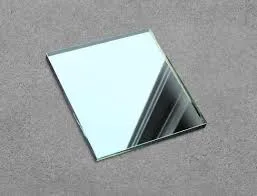

The Evolution and Significance of Tin Float Glass
Tin float glass is a remarkable product developed in the mid-20th century, changing the landscape of glass manufacturing and architecture. As an innovative method for producing high-quality, flat glass, tin float glass revolutionized how we view and utilize glass in both residential and commercial applications. The process is characterized by its smooth, clear surface, making it ideal for high-end windows and various architectural elements.
The Origins of Float Glass Technology
Before the advent of float glass, glass was primarily produced using the crown glass and plate glass methods. These older techniques resulted in glass with significant optical imperfections and varying thicknesses. The breakthrough came in the 1950s, pioneered by Sir Alastair Pilkington and his team in the United Kingdom. They developed a new process using molten tin, which allowed for the creation of glass sheets that were not only uniform in thickness but also had improved clarity and surface quality.
The fundamental idea behind tin float glass is simple glass is floated on a bed of molten tin. This method offers several advantages over previous techniques. First, the glass can achieve a very flat surface because it is supported by the liquid tin, minimizing distortion and imperfections. Second, the process allows for continuous production, which significantly lowers manufacturing costs and time.
The Manufacturing Process
The production of tin float glass involves several critical steps. First, raw materials such as silica sand, soda ash, and limestone are melted in a furnace at high temperatures. This molten glass is then poured onto a pool of molten tin. Unlike other methods where glass must be flattened manually or through pressure, the molten glass naturally forms a smooth surface due to its buoyancy on the tin.
As the glass moves along the tin bath, it gradually cools and solidifies. The thickness can be controlled by adjusting the temperature, the speed of movement, and the volume of glass poured onto the tin. Once the glass exits the tin bath, it is cut into sheets and further processed according to its intended use.
Advantages of Tin Float Glass

The emergence of tin float glass offered significant advantages over traditional glass production methods. One of the most notable benefits is its optical clarity. The float glass surface has minimal optical distortion, making it perfect for applications that require clear visibility, such as windows, mirrors, and display cases.
Another advantage is the consistency in thickness. The float glass method allows for uniform thickness across large sheets, enabling manufacturers to create larger panels without compromising strength or clarity. This uniformity is crucial for architects and builders seeking to create expansive glass facades and innovative designs.
Additionally, tin float glass is highly versatile. It can be further treated to enhance its properties, such as being tempered or coated for energy efficiency. The ability to produce low-emissivity (low-E) glass, which reflects infrared light while allowing visible light to pass through, has made tin float glass a popular choice for energy-efficient buildings.
Impact on Architecture and Design
The impact of tin float glass on architecture and design has been profound. Its introduction has led to the creation of iconic buildings and structures characterized by vast glass surfaces that offer transparency, natural light, and stunning views. The use of tin float glass in skyscrapers, commercial buildings, and modern homes has transformed urban landscapes and influenced design philosophies.
Moreover, the aesthetic appeal of large glass panels has encouraged architects to blur the lines between indoor and outdoor spaces. The ability to use extensive glass applications has enabled designs that emphasize openness, light, and connectivity with the environment, ultimately leading to more sustainable building practices.
Conclusion
Tin float glass has become an essential material in modern construction and design, offering unique advantages in quality, aesthetic, and functional properties. Its invention marked a significant turning point in the glass manufacturing industry, aligning with the needs of contemporary architecture and providing the means for innovative design solutions. As technology continues to evolve, the significance of tin float glass remains, paving the way for the future of glass in construction and design, enhancing our living environments and everyday experiences.